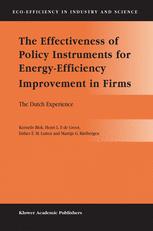

Most ebook files are in PDF format, so you can easily read them using various software such as Foxit Reader or directly on the Google Chrome browser.
Some ebook files are released by publishers in other formats such as .awz, .mobi, .epub, .fb2, etc. You may need to install specific software to read these formats on mobile/PC, such as Calibre.
Please read the tutorial at this link: https://ebookbell.com/faq
We offer FREE conversion to the popular formats you request; however, this may take some time. Therefore, right after payment, please email us, and we will try to provide the service as quickly as possible.
For some exceptional file formats or broken links (if any), please refrain from opening any disputes. Instead, email us first, and we will try to assist within a maximum of 6 hours.
EbookBell Team

4.3
38 reviewsImprovement of energy efficiency is one of the important options for reducing greenhouse gas emissions. According to the Third Assessment Report of the Intergovernmental Panel on Climate Change, hundreds of technologies for improving the end-use energy efficiency make up more than half of the global potential for greenhouse gas emission reduction in the short and medium term (2010 -2020). (IPCC, 2001; see also WEA, 2000). An important next question is how these options can actually be deployed. More specifically, one may ask what role governments can play by using policy instruments to promote the deployment of energy efficient technologies. In this introductory Chapter, we will first set out the aim of the research described in this book. Then we will discuss the various policy instruments that may playa role in energy-efficiency improvement. Next the various aspects important for characterising policy instruments will be discussed and the various disciplinary approaches are listed. Finally, the outline of the complete book will be given.